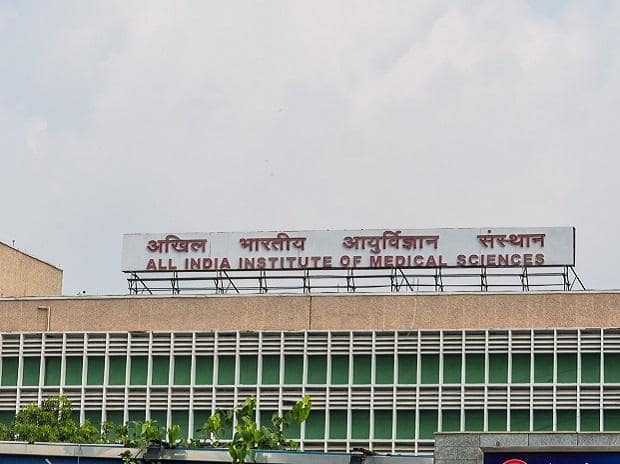

*Image courtesy Business Standard
Pradhan Mantri Swasthya Suraksha Yojana (PMSSY), a Central Sector Scheme, was announced in August 2003 to address imbalances in availability of tertiary care hospitals and improve medical education in the country.
The scheme received a fresh impetus to fulfil Prime Minister Shri Narendra Modi’s vision of quality medical education in the underserved States, and many new All India Institutes of Medical Sciences are being set up under the Pradhan Mantri Swasthya Suraksha Yojana.
So far setting up of 22 new AIIMS has been approved under the scheme, out of which six AIIMS at Bhopal, Bhubaneswar, Jodhpur, Patna, Raipur and Rishikesh are already fully functional. In another seven AIIMS, OPD facility and MBBS classes have started while in five more institutes only MBBS classes has started.
These regional AIIMS, set up or being set up under PMSSY, have played a very significant role in management of COVID since the beginning of the pandemic early last year. Their contribution becomes significant when seen in the light of the fact that they serve areas where the health infrastructure was weak.
True to their mandate, they have also admirably responded to the challenge of the second wave by expanding bed capacities for treatment for moderate and severe COVID patients. Starting from the second week of April 2021, more than 1,300 oxygen beds and about 530 ICU beds, dedicated for COVID treatment, have been added in these Institutions and the current availability of oxygen and ICU beds available for people is about 1,900 and 900 respectively.
Keeping in view the increased demand, COVID treatment facilities have been started from AIIMS at Raebareli and Gorakhpur during April-May, 2021 which has helped the State of Uttar Pradesh to proactively serve patients of remote districts like Fatehpur, Barabanki, Kaushambi, Pratapgarh, Sultanpur, Ambedkar Nagar, Basti, Sant Kabir Nagar, Maharajganj, Kushinagar, Deoria, Ballia, Mau and Azamgarh.
Current availability of dedicated COVID beds in new AIIMS stands as:
|
S.No. |
INSTITUTE |
Current availability of dedicated COVID beds in new AIIMS |
|
|
Non-ICU Oxygen Beds |
ICU Beds including Ventilator |
||
|
1 |
AIIMS, Bhubaneswar |
295 |
62 |
|
2 |
AIIMS, Bhopal |
300 |
200 |
|
3 |
AIIMS, Jodhpur |
120 |
190 |
|
4 |
AIIMS, Patna |
330 |
60 |
|
5 |
AIIMS, Raipur |
406 |
81 |
|
6 |
AIIMS, Rishikesh |
150 |
250 |
|
7 |
AIIMS, Mangalagiri |
90 |
10 |
|
8 |
AIIMS, Nagpur |
125 |
10 |
|
9 |
AIIMS, Raebareli |
30 |
20 |
|
10 |
AIIMS, Bathinda |
45 |
25 |
|
11 |
AIIMS, Bibinagar |
24 |
0 |
|
12 |
AIIMS, Gorakhpur |
10 |
0 |
|
|
TOTAL |
1925 |
908 |
Capacities of these new AIIMS to handle COVID cases are being reinforced by the Government of India by way of allocations of additional equipment such as ventilators, oxygen concentrators, oxygen cylinders, besides other consumables such as N-95 masks, PPE kits and essential drugs which includes Favipiravir, Remdesivir and Tocilizumab.
Being tertiary care centres, the new regional AIIMS also delivered other critical non-COVID health services to COVID patients such as those requiring dialysis or those with serious heart ailments, pregnant women, paediatric cases.
AIIMS Raipur alone treated a total of 9664 COVID patients from March 2021 till 17th May, 2021. The Institute has provided care to 362 COVID positive women, helped 223 of them to have safe deliveries. Paediatric Care was provided to 402 COVID children. 898 COVID patients with severe heart ailments availed treatment while 272 patients were aided in their dialysis session.

The country is currently witnessing cases of mucormycosis being reported from different States. The condition is generally seen in people with a weakened immune system and those with Diabetes. Diabetes being a co-morbidity for COVID, the treatment of which requires use of steroids that modulates body’s immune-response, the treatment for this rare infection is very complex. However, even for this condition, effective and high-quality treatment is being offered by the AIIMS at Raipur, Jodhpur, Patna, Rishikesh, Bhubaneswar and Bhopal, besides some other which are not yet fully functional.